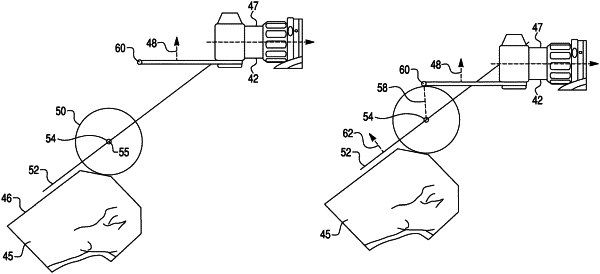| CPC A61B 17/15 (2013.01) [A61B 17/142 (2016.11); A61B 17/1615 (2013.01); A61B 17/1703 (2013.01); A61B 34/20 (2016.02); A61B 34/30 (2016.02); A61B 34/76 (2016.02); A61B 17/157 (2013.01); A61B 34/25 (2016.02); A61B 90/03 (2016.02); A61B 2017/00128 (2013.01); A61B 2034/105 (2016.02); A61B 2034/2055 (2016.02)] | 20 Claims |

|
1. A surgical system comprising:
a robotic arm;
an end effector held by the robotic arm;
a tracking system configured to detect a patient position and an end effector position relative to the patient position;
a processor and non-transitory memory storing instructions that, when executed by the processor, cause the processor to:
define a virtual trajectory for the end effector to move along relative to the patient position;
define a virtual boundary spaced from the virtual trajectory;
obtain the patient position and the end effector position from the tracking system during manual movement of the end effector by a user;
determine whether the end effector position crossed from a first side of the virtual boundary to a second side of the virtual boundary based on the patient position and the end effector position obtained during the manual movement of the end effector, wherein the virtual trajectory is on the second side of the virtual boundary; and
upon determination that the end effector position crossed to the second side of the virtual boundary, switch into an automatic mode in which the processor controls the robotic arm to automatically align the end effector with the virtual trajectory.
|